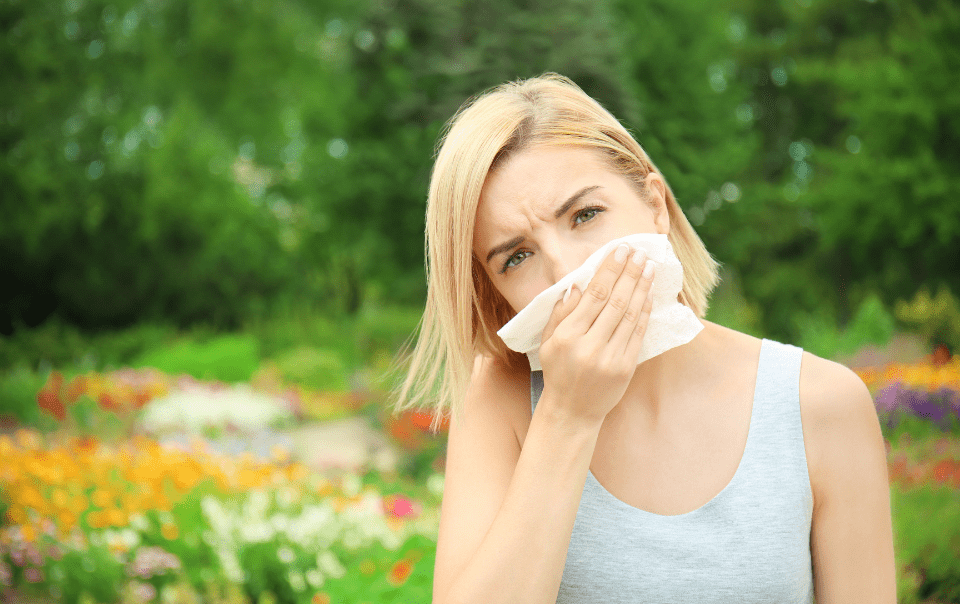Living with rhinitis, whether acute or chronic, is not easy and often presents daily challenges that extend beyond the typical inconveniences of a runny nose or sneezing. For many individuals, confronting rhinitis seems like an insurmountable challenge marked by inflammation in the nasal airways, congestion, sneezing, runny nose, and itching. Physical discomfort often takes a significant toll on sleep quality, concentration, and overall quality of life.
From navigating allergen triggers to finding effective management strategies, individuals with chronic rhinitis often cope with discomfort and seek ways to enhance their daily lives. To better understand the most effective treatment options, let’s dive into this overview of the distinctions between rhinitis and chronic rhinitis.
The Many Faces of Rhinitis
Rhinitis is the inflammation of the nasal passages that often manifests as acute or chronic. The condition is generally triggered by exposure to allergens, infections, or irritants. Acute rhinitis and chronic rhinitis are both conditions affecting the nasal passages, but they differ in terms of duration, underlying causes, and symptoms.
Acute rhinitis, however, is often triggered by viral infections like the common cold, COVID-19, or the flu. Acute rhinitis typically resolves within a week to ten days. Though symptoms can be bothersome, it is generally a self-limiting condition. ENT treatment focuses on alleviating symptoms, with rest, hydration, and over-the-counter medications.
Allergic rhinitis, a common subtype, is triggered by exposure to allergens such as pollen, pet dander, or dust mites. Symptoms of allergic rhinitis include itching of the eyes or nose, watery eyes, and fatigue. Non-allergic rhinitis is caused by exposure to environmental irritants, such as smoke, pollution, or changes in weather.
Chronic rhinitis is a persistent inflammation of the nasal passages lasting 12 weeks or longer, characterized by nasal congestion, runny nose, postnasal drip, and sneezing. Some individuals also develop additional symptoms like headaches and fever. The most common causes include allergies, irritants, or structural abnormalities in the nasal passages.
Timely medical attention is crucial for an accurate diagnosis and tailored treatment plan to alleviate symptoms and improve overall well-being. Treatment for chronic rhinitis involves identifying and addressing the underlying cause. This may include allergen avoidance, nasal corticosteroids, antihistamines, or, in severe cases, surgical intervention to correct structural issues.
Rhinitis: Commonalities and Differences
Both chronic rhinitis and rhinitis share common symptoms such as nasal congestion, runny nose, sneezing, and postnasal drip. Both conditions can cause discomfort and impact daily life. However, they differ in duration; chronic rhinitis persists for over three months, while rhinitis, often referring to acute rhinitis, is short-term. Additionally, chronic rhinitis may involve more subtle symptoms like facial pain or pressure. Both types can result from allergic triggers, but chronic rhinitis can also be non-allergic, caused by irritants or structural issues. Understanding these shared and distinct symptoms is crucial for accurate diagnosis and tailored management, whether through allergen avoidance, medications, or surgical intervention based on the specific condition.
Diagnosing Rhinitis
Diagnosing chronic rhinitis involves a comprehensive assessment by an ENT doctor. The process typically includes a detailed medical history, evaluation of symptoms, and identification of potential triggers. Allergy testing may be conducted to determine allergic causes. Nasal endoscopy or imaging studies may be employed to assess structural abnormalities. In some cases, a trial of medications may be used to observe treatment response. Accurate diagnosis allows for targeted management strategies, addressing the underlying cause for effective and personalized treatment.
Treatment for Rhinitis
The treatment for rhinitis, whether acute or chronic, aims to alleviate symptoms and address the underlying cause.
- Antihistamines – Effective for allergic rhinitis by blocking histamine release.
- Nasal corticosteroids – Reduce inflammation and relieve nasal congestion.
- Decongestants – Provide temporary relief from nasal congestion by narrowing blood vessels.
- Leukotriene modifiers – Target inflammation in cases of allergic rhinitis.
- Allergen Avoidance – Identifying and avoiding allergens that trigger symptoms, such as pollen, pet dander, or dust mites.
- Nasal Irrigation – Using saline solutions to rinse the nasal passages and alleviate congestion.
- Immunotherapy – Allergy shots or sublingual tablets may be recommended for long-term management of allergic rhinitis.
- Environmental Control – Minimizing exposure to irritants like tobacco smoke, pollution, and strong odors.
- Surgical Intervention – In cases of chronic rhinitis with structural abnormalities, surgical procedures such as turbinate reduction or septoplasty may be considered.
- Lifestyle Modifications – Maintaining proper hydration, using air purifiers, and keeping living spaces clean can contribute to symptom relief.
- Prescription Medications– In some cases, prescription medications such as stronger corticosteroids or antihistamines may be prescribed.
It’s essential for individuals experiencing rhinitis symptoms to consult with a healthcare professional for an accurate diagnosis and personalized treatment plan. The approach may vary based on the type of rhinitis, its underlying causes, and the severity of symptoms. Regular follow-ups and adjustments to the treatment plan may be necessary for optimal management.
Preventing Rhinitis
Preventing rhinitis involves adopting strategies to minimize exposure to triggers and maintain overall nasal health. Key preventive measures include practicing good hygiene, such as regular handwashing to reduce viral infections. Avoiding allergens like pollen, dust, and pet dander is crucial for those with allergic rhinitis. Proper ventilation and air purification in living spaces can reduce indoor irritants. Smoking cessation and limiting exposure to environmental pollutants contribute to preventing non-allergic rhinitis. Maintaining a healthy lifestyle with regular exercise and a balanced diet supports immune function, reducing the risk of infections. Consultation with healthcare professionals for personalized advice enhances preventive efforts.
Conclusion
In this authoritative odyssey, through the intricacies of rhinitis and chronic rhinitis, we have unveiled the distinctive features that define these nasal conditions. Armed with knowledge and a discerning approach, individuals can navigate the nasal landscape with confidence, ensuring a breath of fresh air in every chapter of their respiratory journey. As we bid adieu to the nasal drama, let this authoritative guide serve as a beacon, illuminating the path to nasal wellness and a harmonious respiratory narrative.


